Kenny Carkeet has been making music with AWOLNATION — the electronic alt-rock band masterminded by frontman Aaron Bruno — since the project’s inception in 2009. “I’ve been playing with AWOL since the very beginning,” recalls Carkeet. “I met Aaron when he was still kind of creating the AWOLNATION thing…even before this was a band.”
The band gained a worldwide audience with their megahit “Sail,” one of several tracks engineered by Carkeet on AWOL’s 2011 debut album, Megalithic Symphony. Since the success of “Sail,” AWOLNATION has toured the world, and followed up their auspicious debut with a sophomore album, 2015’s Run.
zZounds caught up with Carkeet between legs of AWOL’s seemingly-never-ending tour schedule to chat about his songwriting and production process, his live keyboard rig, and what it’s like to open for the Prophets of Rage supergroup.
Kenny’s Keyboard Rig
zZounds: What’s in your keyboard rig for AWOL shows?
Kenny Carkeet: Nowadays I use a Nord Wave — the best keyboard — which I’ve shrink-wrapped in yellow shrink wrap now. I refuse to use anything else! I have an Akai MPX pad set on top of the Nord. Through the Nord, I have an EHX Cathedral reverb pedal, a Boss DD-7 delay pedal, a Space Echo delay pedal, an expression pedal which throws delays for certain times, and then a volume pedal with a pan switch on it. I trigger our click that we hear in our in-ears from my pedalboard as well. Then, I have a Wurlitzer that I play on my right side that has a wah pedal attached to it, and another Cathedral reverb/delay pedal. On the other side, I have two Akai MPC-1000s that have extra cork padding and different LCD lighting and a bunch of cool stuff that make ’em easier for me to play live as an instrument. That’s my rig! It’s evolved a lot.
zZounds: What was the most recent addition to the rig?
Kenny Carkeet: Well, the most recent addition is the Wurli. It brings such a good organic vibe to what we’re doing. Especially because I’m playing synths, and samples, and loops, and claps — it’s nice to play keys sometimes with a nice, weighted instrument like that, that brings some sort of life to the keys section of the band.
The expression pedal on the Nord is something that’s very new to me, that I just started doing maybe 5 shows ago. I actually learned it from my guitar player, Zach [Irons]. He’s got some Moogerfooger pedals that he has an expression pedal attached to, where he throws feedback with those. And I thought, “There’s no reason I can’t do that with the Nord; it’s the same thing.”
So that’s when I set up the expression pedal and learned that I could throw delays; I can throw filters; I can throw distortion — all on this pedal. So now, my sounds that I’ve spent so much time creating, are breathing while I’m playing them — because I’m doing different things, and it’s different every night. And so it allows me to creative and change stuff up, instead of playing the same thing every night.
zZounds: If Aaron comes up with a synth sound in the studio, and your job is to recreate that sound on the stage, how do you go about getting that sound?
Kenny Carkeet: Here’s a cool thing: To get the sounds from the record to the stage, I actually don’t even “re-create.” Because I’m using the Nord Wave, I can go into Pro Tools, bring up the synth track that Aaron laid down, chop up each note, put it on each note of the keyboard, and then it maps out across the rest of the keyboard. And now I have that record’s sound in the keys, so everything that I’m playing on stage is from the record. It’s all sampled inside the keyboard.
You can take a monosynth, you map it across the Nord Wave, and it’s now a polyphonic synth. Which is crazy to hear monophonic presets in polyphonic. The “Sail” sound — that saw bass sound — is from an ATC-1 Tone Chameleon, an old-school monophonic rackmounted synth. I’ve never seen another one in my entire life. I sampled, in Pro Tools, the “Sail” saw bass, and now I have a polyphonic saw bass, which is nasty and disgusting when you play octaves on it!

The source of that “Sail” bass: Studio Electronics ATC-1 Tone Chameleon.
That’s why I love the Wave so much. You can do crazy things on it. There’s other keyboards that do [sampling], but I’m a 49-key kind of guy — no bigger, no smaller. 49 is the perfect size — and it samples flawlessly, all the way across. I’ve taken Aaron’s voice and done stuff across [the pitch range of the keyboard]. Don’t give me 88 keys — 49 is so perfect for me. It’s the right number of octaves for both hands, and you can quickly flip to a different octave.
zZounds: It’s funny to think about how trends come and go. Synths were out of style, and now they’re back…
Kenny Carkeet: It was never cool to be a keyboard player! I was forced to take piano lessons at age 4. At 10, I realized girls don’t like piano players, so I got a guitar, right? And then I became angry at about 14, so I started playing drums. And then I wanted to start a band, but we didn’t have a bass player, so I started to play bass. I picked up all these things along the way.
Kenny’s Songwriting and Production Process
zZounds: What instrument do you gravitate towards when you sit down to write music?
Kenny Carkeet: Guitar, a lot. It’s easy for me to put on a guitar with a strap and walk around, and noodle, and find some sort of progression. I have a Wurli at home that I play a lot, too. Sometimes it’s a beat: I’ll be walking down the Third Street Promenade in Santa Monica and I’ll hear some street performer playing a beat on the buckets, I’ll take a voice memo to that thing, and my new beat starts. It’s different every time. I’ve had a horn line inspire me, so then you try to write a horn line that you can make a beat around. It’s whatever inspires you at the moment.
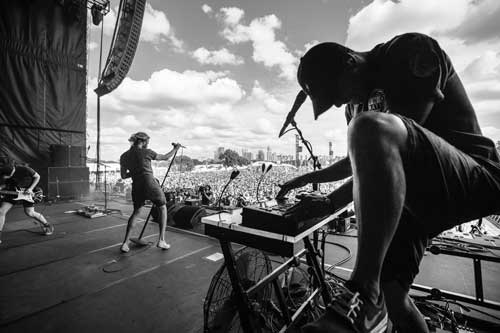
This is how I show my love.
zZounds: How do you differentiate between engineering, producing, and writing?
Kenny Carkeet: As an engineer, generally, you’re more concerned with bringing about the tone that the producer is looking for, or that the band or artist is looking for. “Engineer” is a pretty quiet, thankless job. You’re at the desk; you’re in charge of running the ship, making sure the computer’s not freezing, mics are popping up, and that kind of stuff.
When you get to be a producer, you are translating what you feel the band needs to your engineer. As a songwriter, that [role] is pretty clear-cut, because you’ll just be sitting in a room writing a song from start to finish. But even if you’re a producer, and a band brings a song they’ve already written in, and you change a lot of lyrics, or change a section, or move this around — then that counts as writing as well. There are gray areas, but there are definitely clear positions where you’re supposed to be. I do them all!
zZounds: Tell us about your recording setup back home.
Kenny Carkeet: I have a studio with a production partner, Jim Kaufman. He and I share a facility — he has his studio, I have my studio, and we have two tracking rooms.
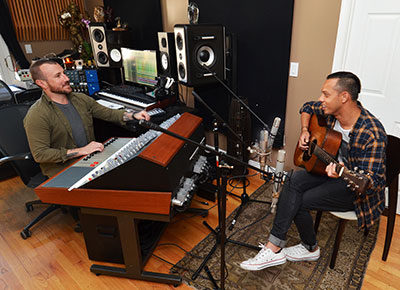
Kenny, at right, with his production partner Jim Kaufman. Photo: David Goggin.
In my room, I have a ’70s-era Neotek Series 1 prototype analog console that was built for Steve Miller. Long story short, one of my best friends is a guy who buys abandoned storage units, and he refurbs all this gear. He owns a studio called Make Believe in Omaha that was featured in Mix magazine’s “Class of 2016.” Anyway, he found this Neotek that was 32 channels, and he cut it down to 16, took 16 for himself, and made me a 16-channel console!
So I got a Neotek, Adam A7X monitors, Pro Tools 12, tons of guitars, a Kemper modeling amp I use for a lot of stuff, tons of amps, all the mics you could think of. We have a Neve Melbourne console in the A room, with Barefoots, and NS10s, and a full Burl Mothership rig. I do a lot of songwriting; my production partner does a lot of record-making. So when you put us together, we have a lot of stuff.
zZounds: What’s the difference between “hitmaking” and songwriting?
Kenny Carkeet: Maybe a simple way to put it would be, songwriting is what comes from within, and hitmaking is what you do on purpose. Sure, you’re writing a song on purpose, but you won’t know if you wrote a hit — you just wrote something that you thought was beautiful. Then there is hitmaking, which is analyzing what’s on the charts. What tempos are people liking? What beats are people liking? How full do they like their production? Then you try to replicate that, and pitch it to people.
So there is hitmaking, and there is songwriting, and I do think that they’re different. Of course, they overlap. With “Sail,” Aaron had done, like, three or four songs at that point. I was engineering; it was just us in the studio. It was just another day. It was another 5 hours of “not doing anything.” We were supposed to work on an actual song, but we didn’t want to, so we just made something from scratch, and then “Sail” came out of it. So yes — that’s genuine songwriting. It came straight from the heart, and it ended up being a hit.
Opening Slots for Prophets of Rage, Fall Out Boy, and The Rolling Stones
zZounds: What was it like going on tour with Fall Out Boy?
Kenny Carkeet: Going on tour with Fall Out Boy was crazy — it was our first real arena tour, and to see touring on that level of professionalism, and the amount of crew that they have, and all the moving parts, and the riggers, and the lighters, and the audio guys, and the techs, and the sound techs — it takes a huge number of people to do that. And it was really cool to see a band project their music to that many people who are just eating it up.
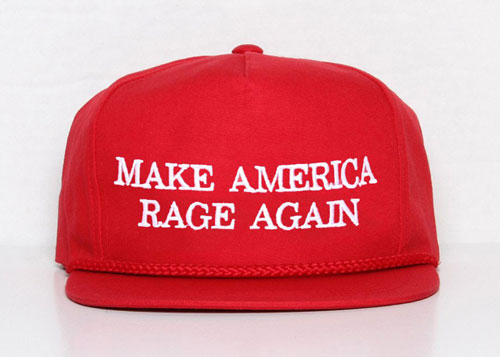
It has to start somewhere.
zZounds: You’ve been opening for Prophets of Rage on the Make America Rage Again tour. What was that experience like for the band?
Getting the opportunity to tour with Prophets of Rage is a once-in-a-lifetime thing for us. It’s something that is way up on the bucket list for all of us — especially Aaron, who has sung with them at a couple shows. At Barclay’s Center, he did the end of “Bullet In My Head.” That right there is worth everything!
I think it’s safe to say every single person in our band has Rage Against The Machine in their top ten, hands down. Probably even put Public Enemy in there too, and Cypress Hill not far behind. So when you put those together — you know, there’s never been a tour where we’ve gone out every night and watched the headliner. Every night! We have to go watch the band every single night. It’s crazy, and it’s inspiring to see. You hear Chuck D’s voice, and it’s over! “Bass! How low can you go?” It’s so classic. You hear it, and you’re so nostalgic, you’re immediately thrown back.
You know, Rage is already kind of hip-hop, but they’re more aggressive rock/hip-hop. B-Real is all hip-hop, so he puts this rhythm onto the lyrics and vocals, with these melodies that are really jumpy and cool. Then, you got the Rage guys behind ’em! A lot of times, there’s no singing, so it’s just them playing intros and outros of songs you grew up hearing forever. And my band’s all headbanging, in the crowd, in the pit. It’s so inspiring. They’re so good. We love those guys, and they’re the sweetest people. They make us step it up every night.
We’re opening; it’s always hard for an opening band when you’re opening for a band like Rage — their fans want Rage. So it’s a challenge for us, but a good challenge, because it makes us play harder and play better. And I think we’ve been doing pretty good — we’ve been pretty well received.
zZounds: AWOLNATION opened for the Rolling Stones back in May 2015. When you’re opening for the Stones, are there any hardcore AWOL fans paying attention?
Kenny Carkeet: Nah, nobody cares. Maybe a handful knew a couple words to a couple songs…You know, when you play concerts every night, you don’t really go and watch that many concerts. But I watched two and a half hours of the Rolling Stones. Start to finish. And I just couldn’t leave. They were just so good.
zZounds: Tell me about the alternate version of “Run” — in which Aaron sings, “I am a human being capable of doing beautiful things,” instead of the original line, “capable of doing terrible things.” How did the “Run (Beautiful Things)” lyric come about?
Kenny Carkeet: I know that Aaron used to comment a lot about the pain in the world, and now he tries more to bring out the beauty…He started singing “beautiful things” at shows, every show, and then he went back and re-recorded it, because it felt better. That’s how it all evolves. He changes lyrics all the time for fun. It’s cool.
zZounds: What advice would you give to those getting started?
Kenny Carkeet: One of the biggest lessons that I’ve learned over and over again is that if you want something, the only question you have to ask yourself is, how bad do I want it? Yes, you have to clean toilets. Yes, you have to live in your car. Yes, you have to shower at the beach. All things that I’ve done. But how bad do you want it? Do you want it that bad? If you want it bad enough, okay, cool — so you follow that path. But you keep your head down and you cruise, and you keep going. A lot of people come up: “I deserve this. I want that. I’m better than you.” Just keep your head down and keep going, and the world will guide you. That’s one of the biggest things that I learned, that my manager taught me years ago. And every time I come up above water and something starts to bug me or something, he talks me back down and says, “Just keep your head down and keep going. Everything works out, life keeps moving, and things keep getting better.”
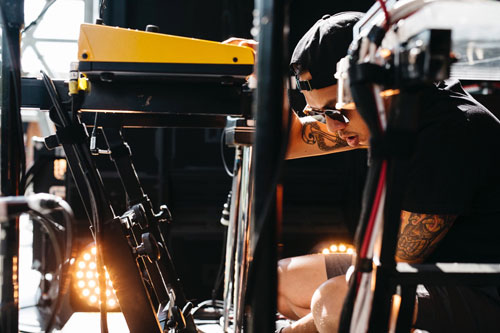
Keep your head down.
zZounds: Any other projects going on outside of AWOLNATION?
Kenny Carkeet: I’m either on the road with AWOL, or I’m writing with bands at my studio. I’ve written a lot of songs with a lot of bands over the last couple years, and I’ve produced a couple records. I just wrote a couple songs with this band Night Riots; they’re on Sumerian. Their new single out right now, “Nothing Personal,” is one that I wrote with the boys. Their second single, “Fangs,” is another one that I wrote with them. I have some secret things going on. There is some solo Kenny stuff that’s being created right now, so it’ll come soon!
zZounds: If your 15-year-old self took a time machine to today, how would he react?
Kenny Carkeet: At 15, I was in a corner of the bedroom playing drums, with guitars over here, and bass over there — just this little hood rat, shirtless, playing drums all day long, thinking “One day, I’m gonna play music.” So if my 15-year-old self saw me today, and saw that all I do is play music, I think he’d be really pumped. He’d be really excited about what was to come.
Follow Kenny on Instagram Follow Kenny on Twitter
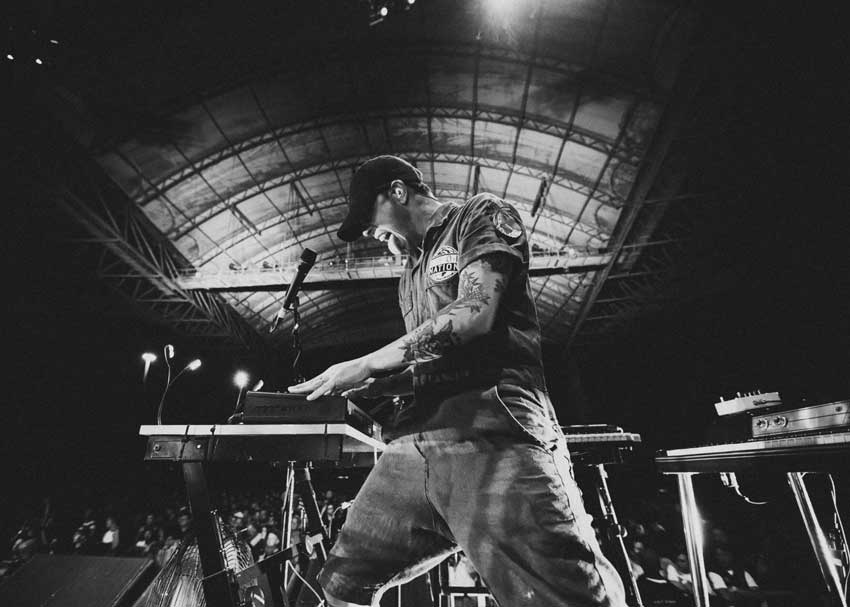
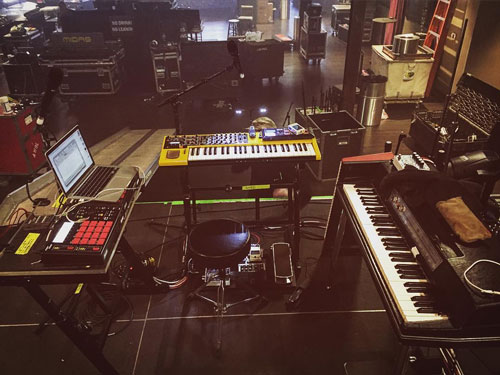
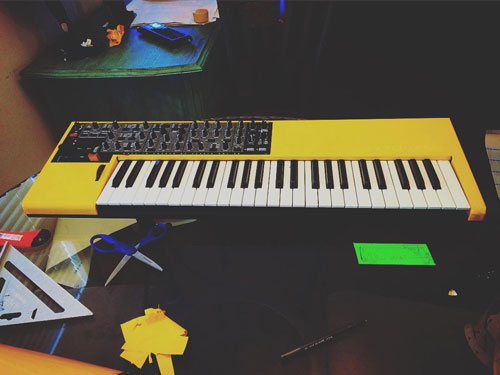
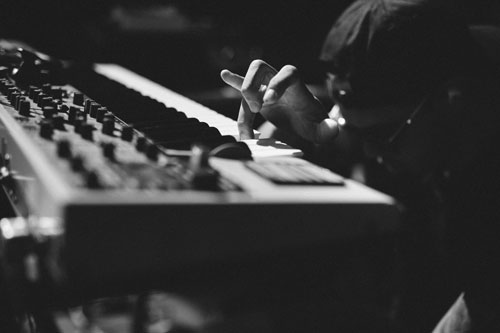

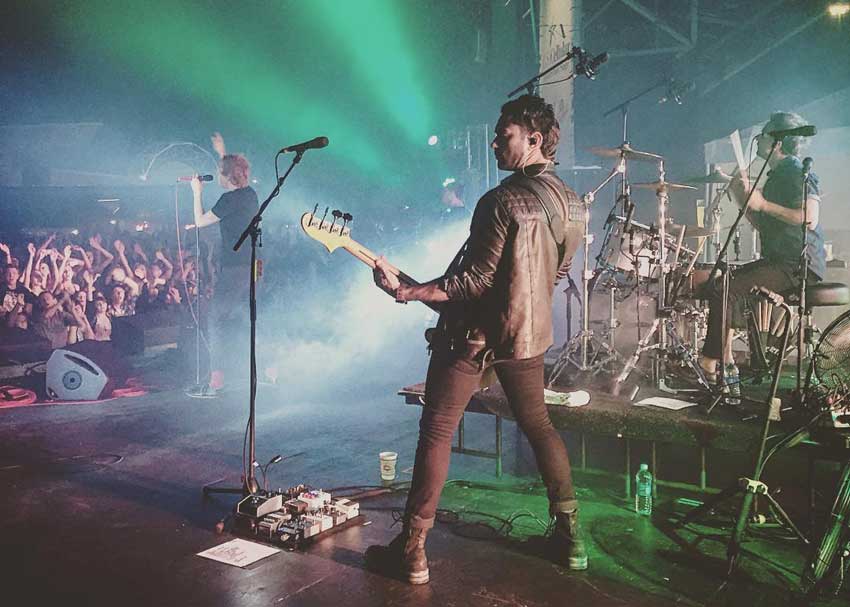


Leave a Reply